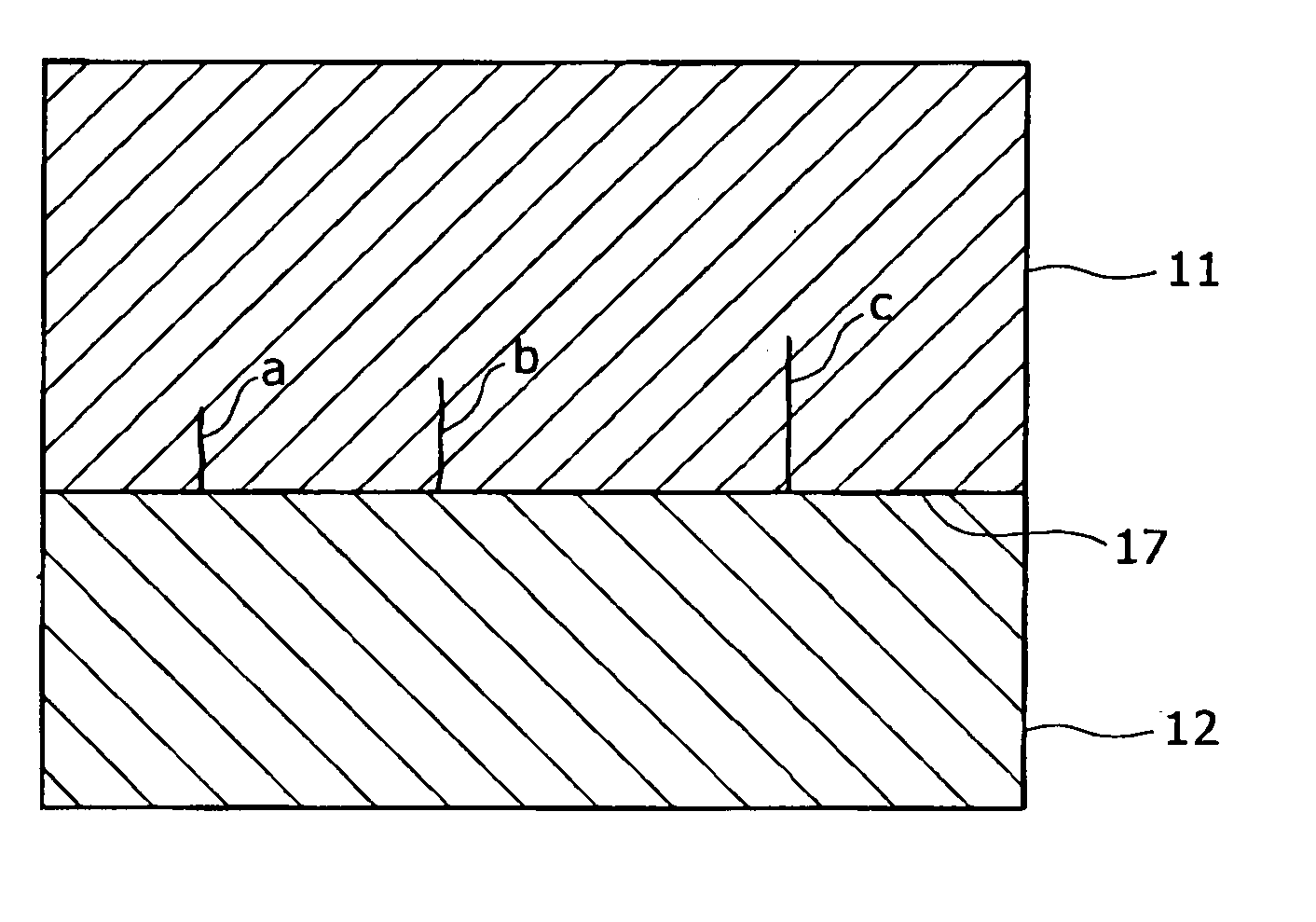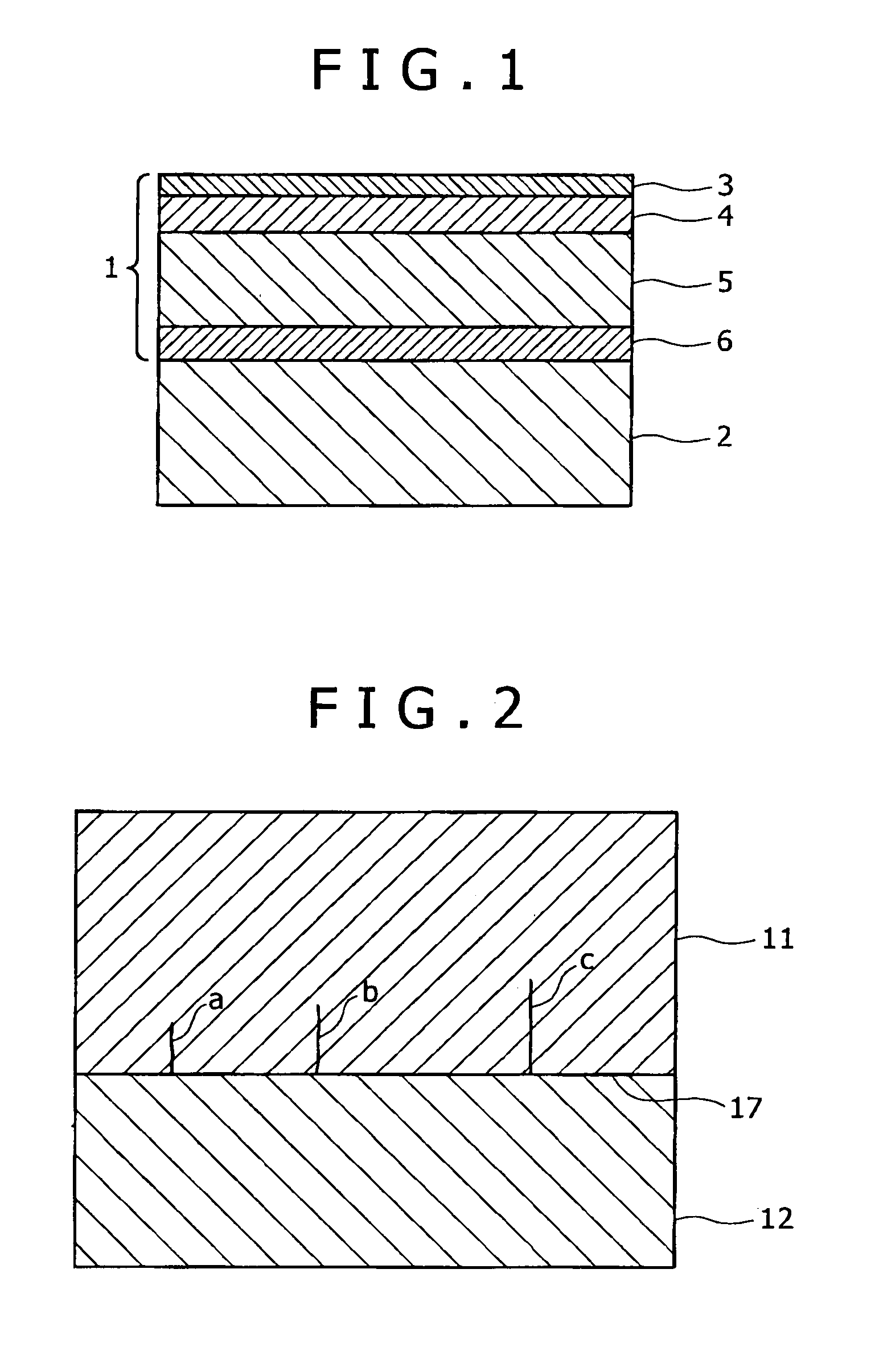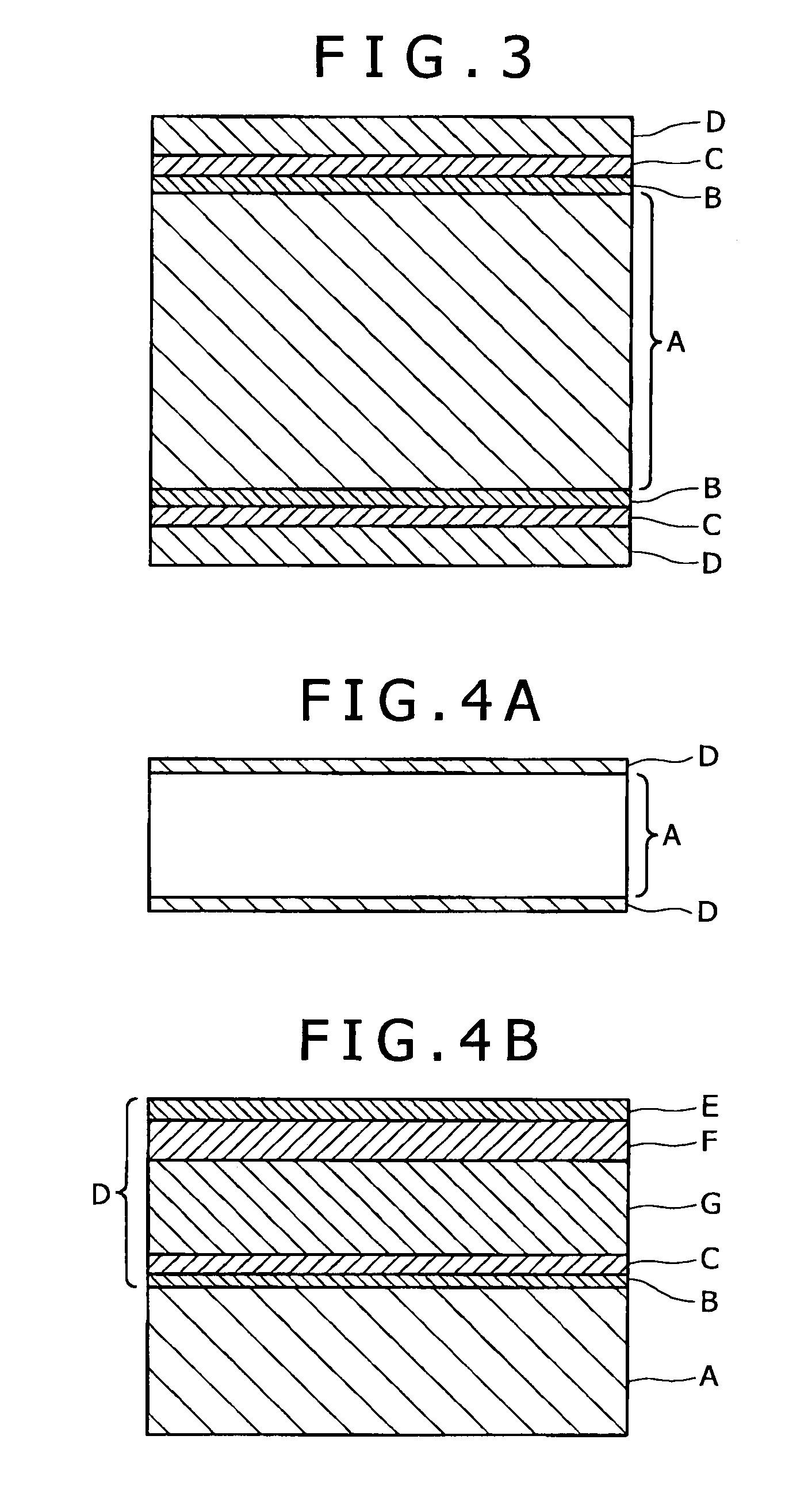Method for production of steel material having excellent scale detachment property, and steel wire material having excellent scale detachment property
- Summary
- Abstract
- Description
- Claims
- Application Information
AI Technical Summary
Benefits of technology
Problems solved by technology
Method used
Image
Examples
embodiment 1
[0041]The present invention covers a method for oxidizing the surface of steel, after a steel billet has undergone heating and subsequent hot rolling, by passing the wound steel product through a wet atmosphere having a dew point of 30° C. to 80° C. for 0.1 to 60 seconds. This method permits steam to diffuse into scale to oxidize the steel, thereby forming FeO-rich scale, increasing the amount of scale adhering to the steel, and improving the MD performance.
[0042]In addition, the foregoing method forms Fe2SiO4 (fayalite) on the steel-scale interface, thereby making scale adhere firmly while the hot-rolled steel product is being cooled and during its storage and transportation. The Fe2SiO4 uniformly forms on said interface through reaction between FeO (which has formed in the steel) and SiO9 originating from Si in the steel product. It firmly adheres to the steel, produces the effect of stress relief accompanied by scale growth, and makes scale adhere stably to the steel surface. The...
embodiment 2
[0057]The following is a detailed description of the steel wire to undergo mechanical descaling according to the present invention. The present invention covers a steel wire which contains C: 0.05-1.2%, Si: 0.01-0.50%, Mn: 0.1-1.5%, P: no more than 0.02%, S: no more than 0.02%, and N: no more than 0.005%. The steel wire may be produced from any kind of steel, ranging from soft steel to hard steel and including alloy steel, selection of which depends on the properties and quality required of end products.
[0058]C is an important element that determines the mechanical properties of steel. The content of C should be no less than 0.05 mass % so that the steel wire has necessary strength and no more than 1.2 mass % so that the steel wire keeps good hot workability at the time of wire production.
[0059]Si is necessary as a deoxidizer for steel. It also affects the amount of Fe2SiO4 (fayalite) as an essential component of the scale to be obtained by the present invention. Therefore, the cont...
embodiment 3
[0084]The following is a description of another embodiment for the steel wire with outstanding mechanical descaling performance according to the present invention.
[0085]The steel wire pertaining to another embodiment of the present invention contains C: 0.05-1.2 mass %, Si: 0.01-0.50 mass %, and Mn: 0.1-1.5 mass %. It is characterized by having scale in an amount of 0.1-0.7 mass %, with said scale containing FeO in an amount no smaller than 30 vol % and Fe2SiO4 in an amount of 0.01-10 vol %. It is superior in mechanical descaling (MD) performance.
[0086]The steel wire pertaining to Embodiment 3 of the present invention contains specific components, has scale in a specific amount, and has scale with a specific composition, as mentioned above. The reason for this is mentioned in the following.
(1) Components in the Steel Wire
[0087]C is an important element that determines the mechanical properties of steel. The steel wire should contain at least 0.05 mass % C for it to have desired stre...
PUM
| Property | Measurement | Unit |
|---|---|---|
| Temperature | aaaaa | aaaaa |
| Temperature | aaaaa | aaaaa |
| Temperature | aaaaa | aaaaa |
Abstract
Description
Claims
Application Information
 Login to View More
Login to View More - R&D
- Intellectual Property
- Life Sciences
- Materials
- Tech Scout
- Unparalleled Data Quality
- Higher Quality Content
- 60% Fewer Hallucinations
Browse by: Latest US Patents, China's latest patents, Technical Efficacy Thesaurus, Application Domain, Technology Topic, Popular Technical Reports.
© 2025 PatSnap. All rights reserved.Legal|Privacy policy|Modern Slavery Act Transparency Statement|Sitemap|About US| Contact US: help@patsnap.com



